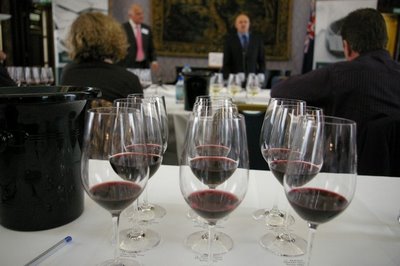
Remarkable tasting today, titled 'Landmark Australia', held by Wine Australia at Australia House in the Strand. Despite an encounter with a doorman who lacked any people skills whatsoever (I was strongly ticked off for being early), it was a fantastic event. The idea was to showcase Australia's 'proud and exceptional history of fine wine'. There's one thing you have to admire the Aussies for, and that's their self-belief. When this comes to wine this is exemplified by their show system, where judgements are made with a degree of certainty and confidence that worries me slightly. Still, the show system has undoubtedly helped in the pursuit of quality (or, at least, a self-sustaining Aussie-centric perception of quality), even though it may have stifled innovation to a degree in the past.
Michael Hill-Smith led the tasting, in conjunction with Paul Henry of Wine Australia. [Hill-Smith comes across as a smart but rather bullish Aussie; I suspect you wouldn't want to disagree with him.] The first part was a sit-down tasting with 17 specially chosen wines, showcasing the best of Australia's fine wine offering. Afterwards, we were treated to a further 26 wines on self-pour, with a long lunch where we got a chance to drink any of these 43 wines that took our fancy.
I came away really enthused by many of the wines. There were lots of really stunning bottles, one after the other. In fact, I was taken by surprise: I follow Aussie wine quite closely, and I guess this familiarity had made me forget just how good the best wines are. It was also great to be able to drink as well as taste - it gives you a bit more of a chance to get to know the wines.
Some highlights:
Tyrell's Vat 47 Chardonnay 1998 Hunter - a big, massive Chardonnay that's unashamedly Australian, but which at 10 years old is ageing beautifully. 94/100
Jim Barry The Florita Riesling 2007 Clare - wow, this is good: pure, rich, focused limey fruit with great balance. 94/100
Wynns John Riddoch Cabernet Sauvignon 1996 Coonawarra - it was hard to believe this wine is already 12 years old. Fantastically concentrated, complex and fresh with lovely purity of fruit. A real classic. 96/100
Cullen Diana Madeline Cabernet Merlot 2005 Margaret River - a thrilling wine that's still tight and youthful. Concentrated ripe, dense fruit with great precision and real potential for further development. 94/100
Hardys Eileen Hardy Shiraz 1999 - Distinctive, classically styled Aussie Shiraz that's ageing beautifully - sweet fruit and nice spiciness, with great integration of ripe, sweet fruit and oak. 94/100
Penfolds RWT Shiraz 2004 Barossa - much better than I was anticipating with beautifully dense, pure dark fruits. Fruit is the dominant feature here. 94/100
Mount Langi Ghiran Langi Shiraz 2004 Grampians - utterly brilliant cool-climate Shiraz with a fresh white pepper nose and lovely purity and lushness to the well defined, precise fruit. Thrilling. 96/100
Brokenwood Graveyard Shiraz 2005 Hunter - stunningly good: fresh, focused and well defined, with massive potential for future development. 95/100
Wild Duck Creek Estate Duck Muck 2004 Heathcote - crazy stuff, with 16.5% alcohol and incredibly rich, porty fruit. But it's actually in balance and is thoroughly delicious. A guilty pleasure. 94/100
Mitolo Serpico Cabernet Sauvignon 2005 McLaren Vale - incredible stuff, with a lovely rich, spicy mid palate and fresh, sweet, slightly leafy blackcurrant fruit. 94/100
Moss Wood Cabernet Sauvignon 2004 Margaret River - thrillingly intense Cabernet that's taut and brooding at the moment, but it's a serious wine with a long life ahead of it. 95/100
Shaw & Smith Shiraz 2006 Adelaide Hills - cool climate Syrah with a peppery edge to the beautifully fresh, well defined red fruits. Fantastic stuff. 94/100
Labels: Australia, Barossa, coonawarra, heathcote, hunter valley, Margaret River, mclaren vale, western australia
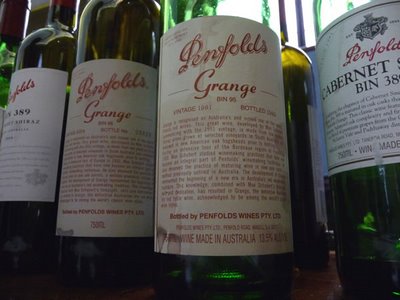 Very interesting tasting this afternoon. It was held at Australia House (where they have the annoying rule that if the invitation says 3.30 pm, you aren't even allowed in the building until 3.30 pm), and it involved a vertical of two Penfolds wines: the iconic Grange, and its sibling the Bin 389. There was a good turnout, including cricketing legend Ian Botham.
Very interesting tasting this afternoon. It was held at Australia House (where they have the annoying rule that if the invitation says 3.30 pm, you aren't even allowed in the building until 3.30 pm), and it involved a vertical of two Penfolds wines: the iconic Grange, and its sibling the Bin 389. There was a good turnout, including cricketing legend Ian Botham.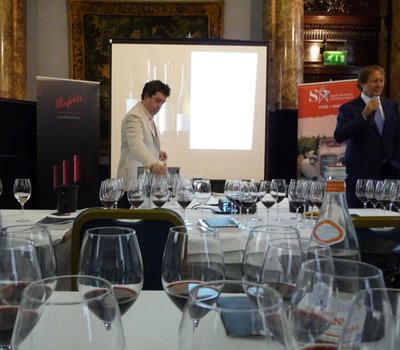
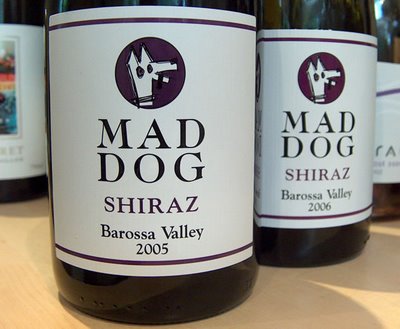
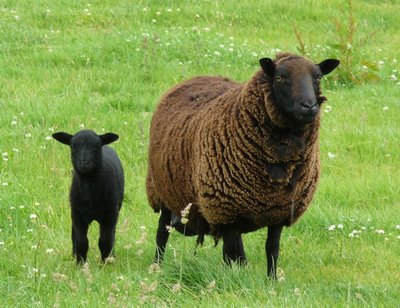
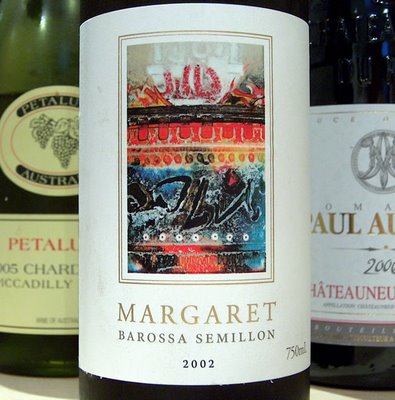 Tonight's wine? An Australian Semillon, but not from the Hunter Valley. Hunter Semillons are one of Australia's unique contributions to the fine wine scene: they're low in alcohol, high in acidity, and start out life neutral but age into a beautiful toasty maturity. Now this is an exception. It's a top Semillon but it comes from the Barossa.
Tonight's wine? An Australian Semillon, but not from the Hunter Valley. Hunter Semillons are one of Australia's unique contributions to the fine wine scene: they're low in alcohol, high in acidity, and start out life neutral but age into a beautiful toasty maturity. Now this is an exception. It's a top Semillon but it comes from the Barossa.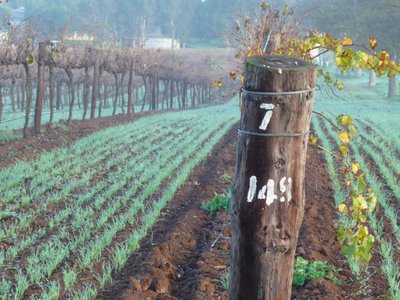
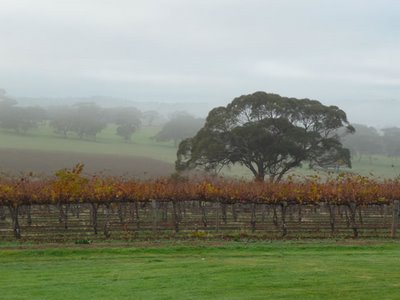
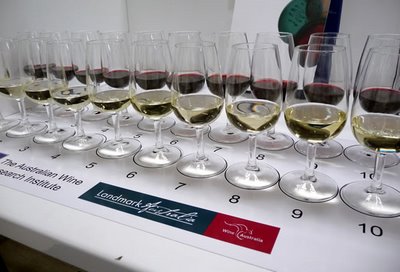
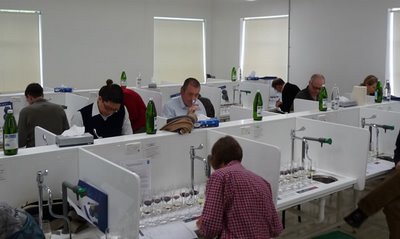 We finished late morning, and headed off to the Barossa, where, after a light lunch, we began session 1 of the Tutorial. Led by Michael Hill Smith, Andrew Caillard and Tony Jordan, it was a look at Australia’s ‘regional classics’. The tasting component consisted of some very smart wines, but even better is yet to come. With dinner - which I have a feeling will be very special - we’ll be looking at ‘Australia’s Fine Wine’.
We finished late morning, and headed off to the Barossa, where, after a light lunch, we began session 1 of the Tutorial. Led by Michael Hill Smith, Andrew Caillard and Tony Jordan, it was a look at Australia’s ‘regional classics’. The tasting component consisted of some very smart wines, but even better is yet to come. With dinner - which I have a feeling will be very special - we’ll be looking at ‘Australia’s Fine Wine’.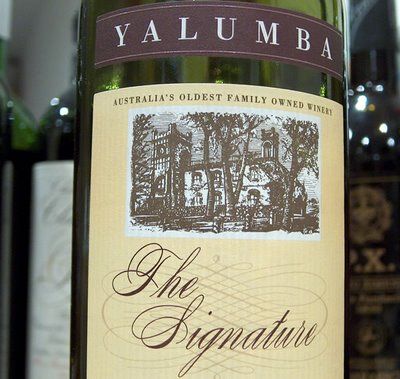
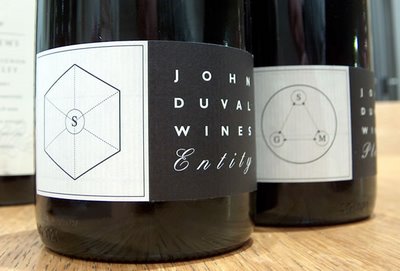


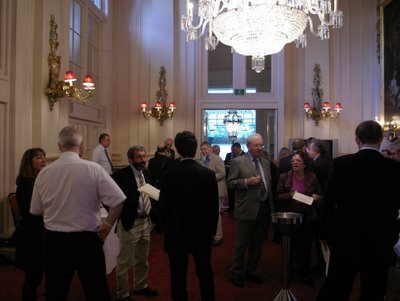
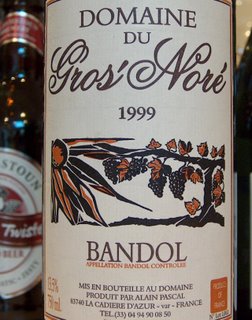
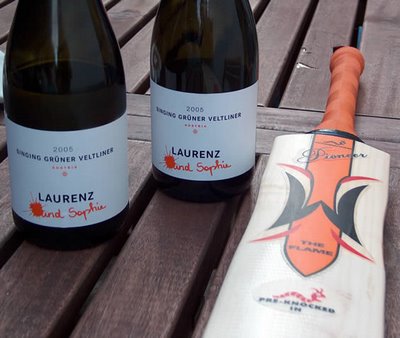
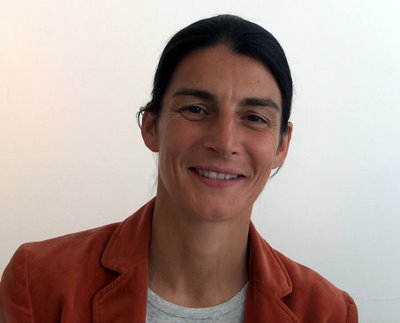
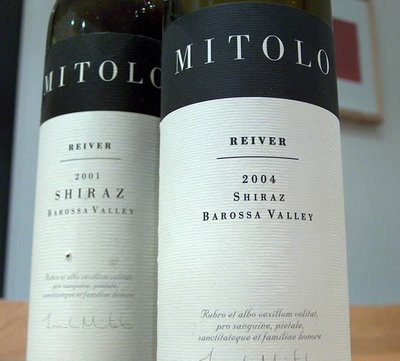
 The web log of wine journalist Jamie Goode. Feel free to nose around; your comments are welcome
The web log of wine journalist Jamie Goode. Feel free to nose around; your comments are welcome 
